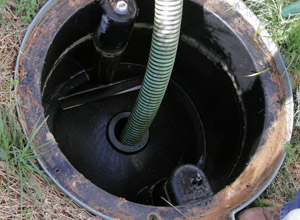Content sponsored
by: Thermaco
Foodservice operators that want to provide more healthful menus and environmentally friendly options continue to evolve, not only in the ways they prepare food but also in the manner in which they handle waste.
But the way operators handle fat, oil and grease waste has long been overlooked.
Until now.
Trapzilla, made by Thermaco in Asheboro, N.C., provides a number of features that can be beneficial to restaurant operators looking for an alternative to traditional concrete or hydromechanical grease interceptors.
 Designed for Today’s Needs
Designed for Today’s Needs
Traditional grease traps are effective in removing the remnants of lard-based fats, but the foodservice industry’s movement toward using healthier oils has led to emulsified waste .
Consequently, requirements for trapping waste differ.
“Years ago, concrete-type grease traps were functional, because grease caps would break open when pumped out,” says David Harry, consultant with SSS-Cubed Inc. in Greensboro, N.C., and former global technical account manager for leading fast food chains including McDonald’s and Burger King.
“As the industry has gone toward using healthier oils that are more easily emulsified, grease caps are no longer an issue.”
In the past, less sugars passed through these systems, so concrete grease traps provided a service life of up to 50 years. But with the increased sugar in specialty drinks and foods, along with a decrease in suspended solids, fats, oil and grease, pH levels have become more acidic, causing concrete grease traps to break down in as little as seven to 12 years.
“Unlike concrete systems, synthetic polymer grease interceptors like Trapzilla have been developed to adapt to changes in waste and, as a result, are resistant to this degradation,” Harry says.
Larger Storage Capacity
Trapzilla’s design provides a large storage capacity in a small space, one of its biggest benefits.
“Most FOG (fat, oil and grease) programs require foodservice operations to install large grease receptors of at least 500 gallons,” says Joseph Jenkins, regulatory compliance specialist at Santa Ana, Calif.-based EEC, which has provided environmental consulting services to private and public clients since 1995. “The problem is this requires space of at least five feet wide and six feet long, which many sites cannot accommodate.”
Trapzilla’s design accommodates 635 pounds of grease in a 36” x 50” space, unlike hydromechanical interceptors that have smaller capacities and require frequent maintenance. Trapzilla’s compact size allows foodservice operators to install the system above or below ground, inside or outside a building.
Traditional grease receptors require pumping after becoming filled with just 25 percent of FOG, but Trapzilla’s design features a separation compartment that holds a larger percentage of fat, oil and grease.
“The system’s configuration promotes the separation of solids, resulting in a shorter fluid retention time,” Jenkins says. “This prevents the formation of hydrogen sulfide gas, which not only emits a rotten egg odor, but also creates low acidic conditions that can damage the receptor.”
Simplified Installation and Maintenance
Installing a traditional concrete grease trap in a new foodservice facility isn’t easy work. It requires an experienced contractor to dig a large, deep hole and hoist a system weighing thousands of pounds into the area, which then has to be filled with dirt.
“Trapzilla is small enough that a hole can be dug by hand and the 130-pound system can be easily moved and installed,” says Bruce Kyles, Thermaco’s engineering manager. “This product is designed to fit through commercial doorways. Plumbers appreciate that they can oversee the installation without involving contractors.”
The system’s polyethylene construction simplifies maintenance. Concrete tanks have rough walls that may require scraping to remove fat, oil and grease, but Trapzilla has smooth sides without corners, promoting easier, quicker cleaning, saving time and money.
With traditional grease interceptors, baffles can become dislodged during pump-outs after low pH conditions erode the concrete supporting them. This can result in grease pass-through and expensive repairs for the owner.
Not Trapzilla.
“Trapzilla’s baffles or inverts are permanent and won’t become dislodged by acidic conditions or cleanings,” Kyles says.
Surprisingly, the same design trait that makes Trapzilla both compact and high capacity also enables it to be the best separator for those looking to convert trapped grease into biodiesel.
“Trapzilla’s baffle design prevents the retained grease from interfacing with the hot, soapy flows entering the unit,” Kyles says. “Unlike conventional interceptors, the system creates a grease preservation condition that is ideal for making biodiesel.”
Content sponsored
by: Thermaco




